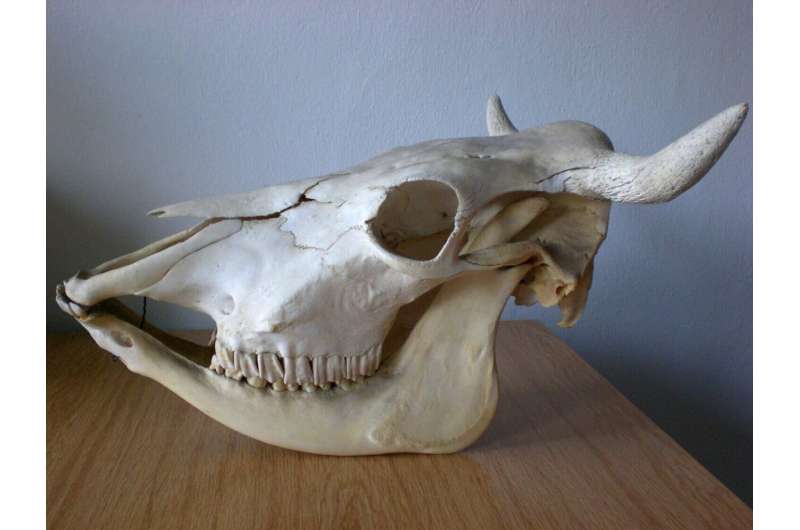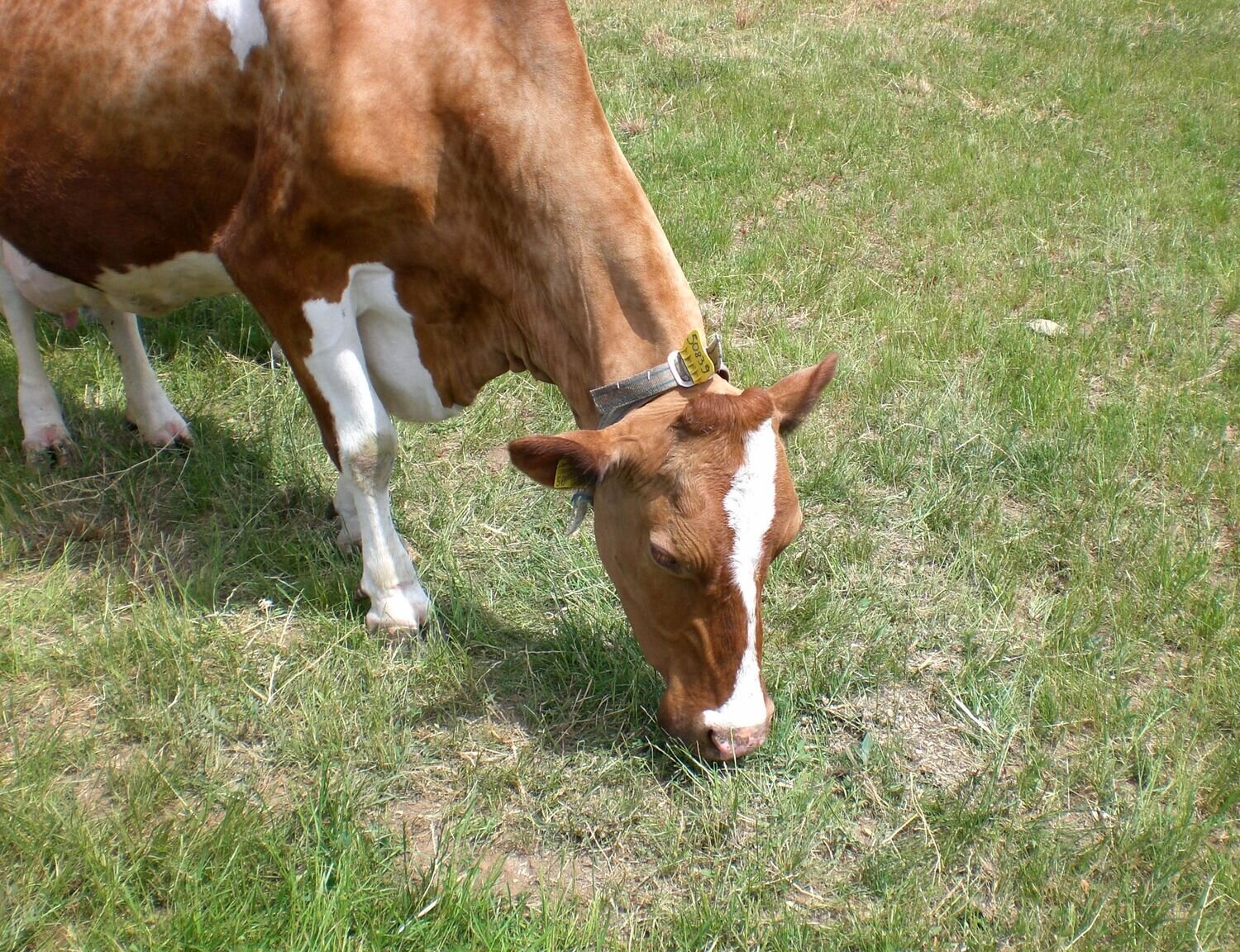Ruminants like cows have developed an unusual way of digesting their food: they ingest plants, give them a rough chewing and then swallow the half-chewed mash before regurgitating it repeatedly and continuing to chew. This has clear advantages, as a research team including the University of Göttingen has shown: the regurgitated mushy food contains much less hard grit, sand and dust than the food that they first ingested.
This process also protects the teeth from being ground down during the chewing process. This may explain why the crowns of the teeth of ruminants are less pronounced than those of other herbivores. The findings have been published in the journal Proceedings of the National Academy of Science (PNAS).
The researchers fed four cows grass feed mixed with sand for several days and took samples of the regurgitated food pulp and feces. They then measured the silicate content of each sample. The compounds from sand and grass are particularly abrasive to teeth because of their hardness. The feces contained about the same amount of silicates as the grass feed mixed with sand, whereas the regurgitated food contained significantly less.
The only explanation is that the silicates must have stayed in the stomach, or more precisely in the “rumen.” The rumen is the largest stomach compartment in ruminants and the place where food is fermented and broken down by microorganisms.
Because this laborious chewing is partly carried out on food pulp that has been “washed” in the rumen, the teeth of ruminants are less worn than those of horses, for example. The latter chew their food completely after ingestion, including the abrasive bits.

For the researchers, this observation makes sense because the teeth of ruminants have comparatively low crowns. The method of digestion means the teeth remain functional for longer. It explains the distinctive shape of ruminant’s teeth: there has been no evolutionary pressure to form more tooth material.
“Our research explains a fundamental but little-studied aspect of food grinding in large herbivores, which contributes to the understanding of the function and evolution of teeth,” explains Professor Jürgen Hummel, the University of Göttingen’s Ruminant Nutrition Group.
In addition to understanding the physiology of digestion, the result is interesting for paleontology: teeth are well preserved as fossils and often provide the most important clues in reconstructing early herbivores and their environment.
More information: Sarah O. Valerio et al, The Ruminant sorting mechanism protects teeth from abrasives, Proceedings of the National Academy of Sciences (2022). DOI: 10.1073/pnas.2212447119
Gordon D. Sanson, Reassessing assumptions about the evolution of herbivore teeth, Proceedings of the National Academy of Sciences (2023). DOI: 10.1073/pnas.2219060120
Citation: Healthy teeth thanks to the ‘washing machine effect’: Research explains tooth abrasion in cows (2023, May 12) retrieved 12 May 2023 from https://phys.org/news/2023-05-healthy-teeth-machine-effect-tooth.html
This document is subject to copyright. Apart from any fair dealing for the purpose of private study or research, no part may be reproduced without the written permission. The content is provided for information purposes only.
Denial of responsibility! TechCodex is an automatic aggregator of the all world’s media. In each content, the hyperlink to the primary source is specified. All trademarks belong to their rightful owners, and all materials to their authors. For any complaint, please reach us at – [email protected]. We will take necessory action within 24 hours.

Jessica Irvine is a tech enthusiast specializing in gadgets. From smart home devices to cutting-edge electronics, Jessica explores the world of consumer tech, offering readers comprehensive reviews, hands-on experiences, and expert insights into the coolest and most innovative gadgets on the market.


